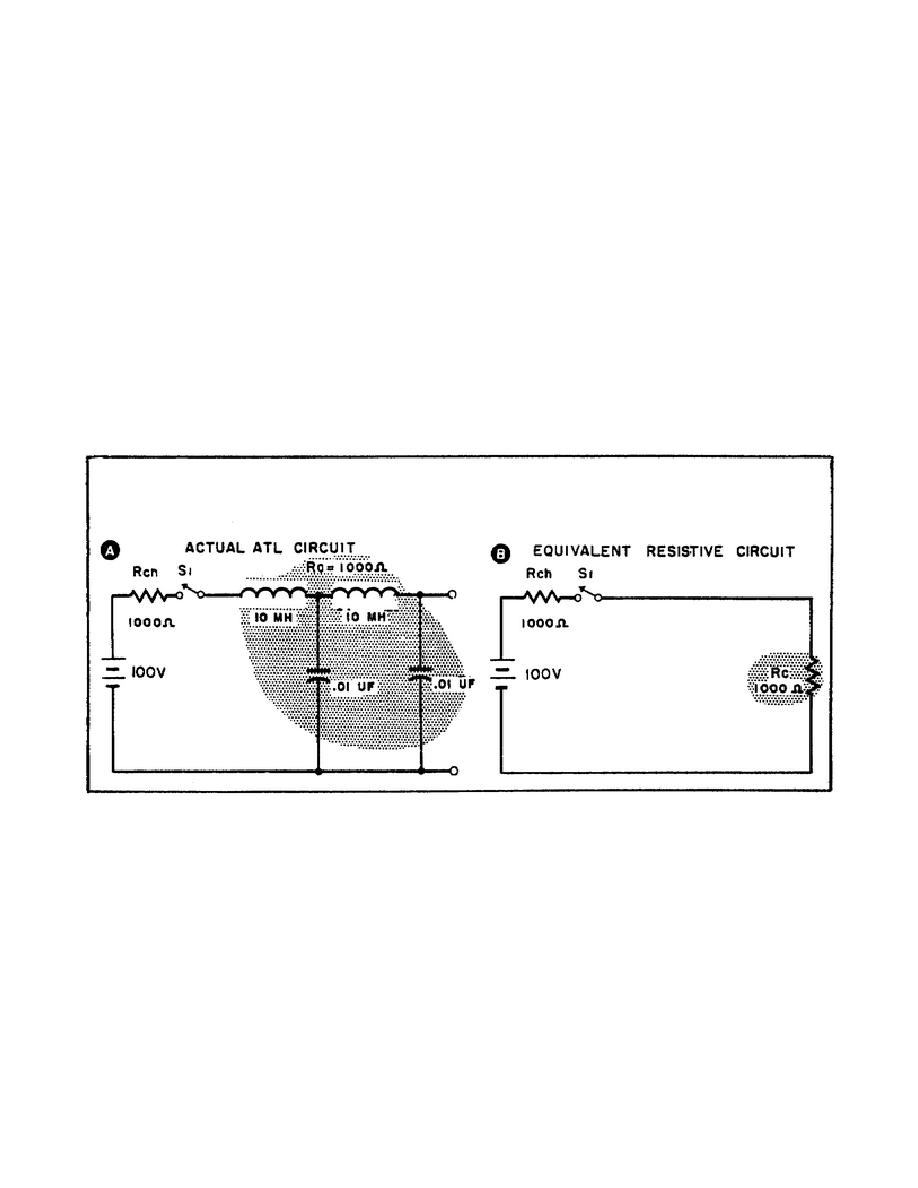
b. You get a large amplitude, short duration, radar modulating pulse by
charging and discharging an ATL.
The resulting pulse is often powerful
enough to drive a magnetron directly. If it isn't, the pulse can be further
shaped and amplified by electron tube stages.
c. A radar set uses an ATL that has a characteristic resistance equal
to the resistance of the ATL high-voltage charging source.
When the high
voltage is applied to the ATL, the ATL charges very rapidly in a special way
that forms the pulse we need.
9. Charging an ATL when its characteristic resistance equals the voltage
source resistance.
a. Part A of Figure 26 shows a 100-volt battery connected to an ATL
consisting of two "L" sections. Rch represents the source resistance and Rc
the characteristic resistance of the ATL. In this case, they're both 1,000
ohms.
Switch 51 connects the sources voltage to the ATL.
An equivalent
circuit is shown in Part B of Figure 26, where Rc is represented as a 1,000-
ohm resistor.
Figure 26. Double "L" Section ATL and Equivalent Circuit.
b. Now, close switch S1 as shown in Figure 27. What happens? Well,
Ohm's Law tells us that when two resistors of equal value are connected in
series, half of the applied voltage appears across each resistor.
Therefore, at the
33



 Previous Page
Previous Page
